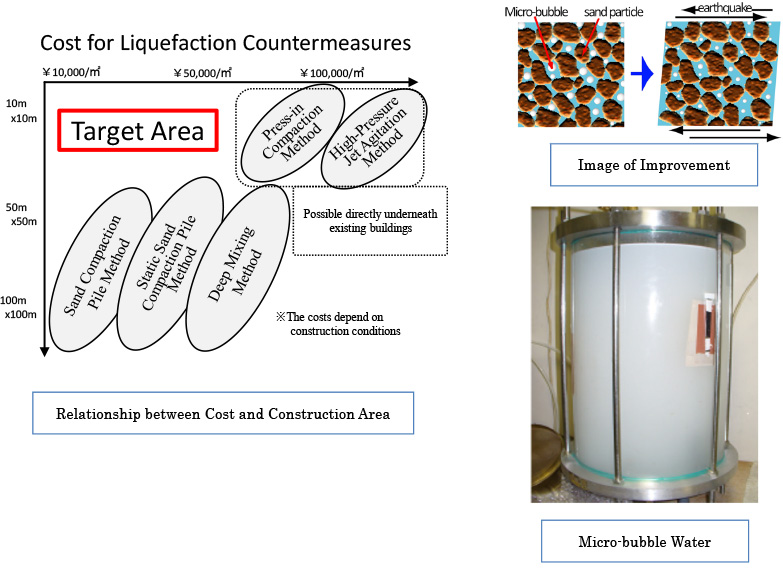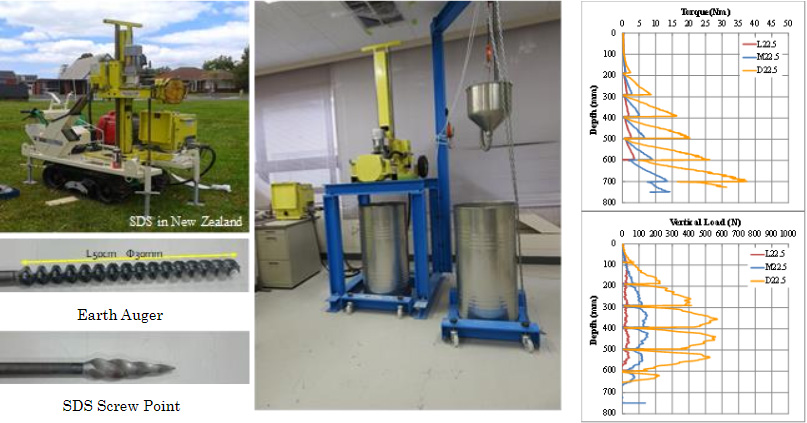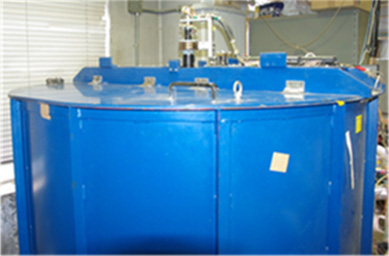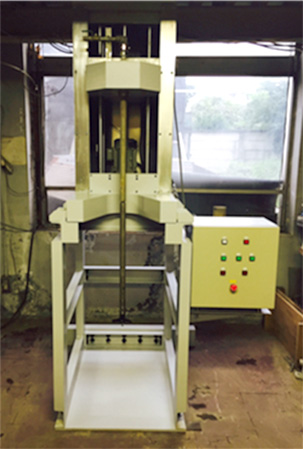Geotechnical / Geo-environmental Engineering Research Center
- KEYWORDS
- Soil Investigation
- Liquefaction Countermeasures
- Soil Structure
Development of technology to reduce geohazards
In order to moderate the increasing threat of natural hazards, and with a particular aim at preventing geohazards such as soil liquefaction and slope failures, the latest developments in fields including soil research, liquefaction countermeasures, and the construction of soil structures are being studied Although our research themes have evolved in tandem with changing social requirements, our center remains committed to addressing these and other issues through collaborative efforts.
Research staff
Director/Professor

Associate Professor

Engineer

Collaborative researcher
Kouichi Nagao
Collaborative researcher
Takamitsu Sasaki
Research themes
Liquefaction Countermeasure using micro-bubbles and particles injectedinto the ground
While various kinds of liquefaction countermeasure methods have been developed for the construction of large-scale important structures, including buildings, there are few for small-scale constructions, such as residential houses. With that point in mind, we have developed a simple and economical method that involves micro-bubbles and water injections. However, it has proven difficult to apply our bubble method to practical use because the bubbles are as breakable as the bubble economy used to be. As a result, we are now developing a new micro-bubble and micro-particle injection method.

New soil investigation technique using Screw Drive Sounding
Swedish Weight Testing (SWT), which is a highly portable and economical in-situ soil testing method, has been widely used for liquefaction countermeasures. However, it has disadvantages include inaccuracies depending on soil type, especially in cases involving hard soil, and being affected by friction. While making the most of SWT's advantages, we have been developing the screw drive sounding (SDS) method to facilitate more effective and accurate soil investigations.

Development of reinforcingand repairing methods for soft ground and soil structures
In order to create and support safer life environments, we have developed effective methods to prevent sediment-related disasters due to earthquakes or torrential rain. We are also studying ways to repair soil structures damaged by uneven settlement and to reinforce soft ground in order to prevent uneven settlement.
Our distinctive research and facility

Centrifuge Apparatus
This special experimental apparatus enables us to simulate an actual sized model by testing a miniaturized model at high rotational speeds. Although this is testing method still rare elsewhere, we have more than 20 years of experience in this field.
Model Ground Improvement Machine
This machine is used to make improved pile-formed bodies by conducting boring using special screws while mixing the ground and cement. Our investigations have examined the most effective screw shapes and the best cement and soil ratios by considering influences from soil properties and temperature.

